The "Zigzag" pattern is one of the most popular drawings on crocheted products. When choosing thick threads of contrasting colors in this technique, a textured coat can be associated with a textured coat, a thin yarn allows you to decorate the wells or shawls with a delicate openwork. Tied the zigzag pattern with crochet, novice authors will starve a way of allowance and luggage hinge, which is useful for creating products with a more complex pattern.
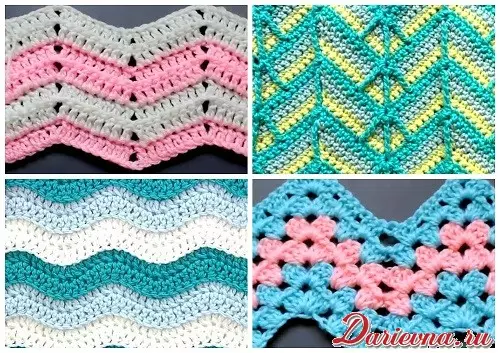
Simple "Zigzag"
The rapport of the easiest in the execution of the "Zigzag" option is just one row, 14 loops, then its description is presented. When knitting, columns are used exclusively with one nakid.
The first row begins with three columns connected in the same loop of the base. They form the upper point of the zigzag. The following three hinges knit three columns (one in each). Then in three loops, you need to tie over the column by connecting their vertices to one. This is the bottom point of the future pattern. Knitting three columns with a total vertex continues in the following three loops. In the last loop, you must associate two columns with one base, and then - the rise (three air loops). In this place, the zigzag line rises again up. In the middle of a row, respectively, instead of two columns and lift loops, you need to knit three columns with one base.
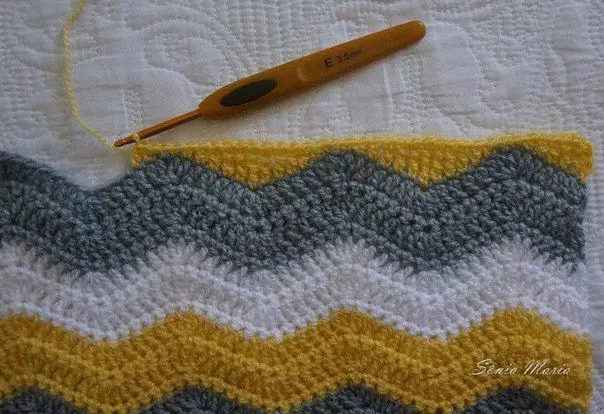
In subsequent rows, knitting is similar, except that the bars will be attached not to air hinges, but to hinges that were formed on the tops of the lower columns. The zigzag direction changes in those places where you stick up or down the beams of three columns.
To comply with symmetry, it is important to ensure that they are attached to the right loops: two beams with one base fit into a number of two similar beams in the lower row, and the bundles with one vertex - to the top of similar beams of the previous row and two columns on the right and left from them, respectively.
Openwork
This pattern is slightly complicated, but also suitable for knitting from yarn any thickness and, therefore, it can be used to create both plaids and poncho and light dresses and cardigans of any model. Pattern rapport - 16 and eight more loops for symmetry, two rows. Below is a detailed master class on its creation.
Article on the topic: Square crochet rug from old things: Scheme with video
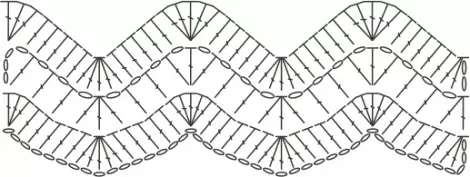
In this, as in the previous zigzag version, all the columns should be knitted with one nakid. In the first auxiliary series it is necessary to tie three loops of lifting. Then in the first two loops of the basics chains - on the column, which should have one vertex. In the following five loops - one post with different vertices. Next, the knitting of the drawing frame begins. In the eighth loop of the base knit five columns. In the following five loops - one post. Then in five loops of the base - columns with one vertex. In the following five - on the column. On this rapport ends, to complete a number you need to tie three columns to the remaining free loop the basics. This series, with further knitting zigzag, will not repeat, alternate the second and third.
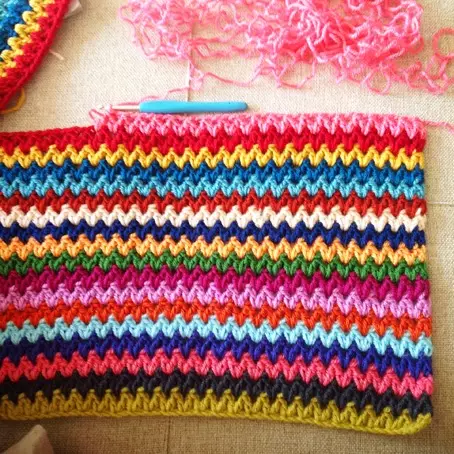
The second row begins with four lifting air loops. Then - the column, the basis of which serves the first side of the bottom row. After that, they knit another air loop and the column connected to the top of the third column at the bottom. Next begins Rapport series.
At its beginning - one air loop, another column (in the fifth column of the first row) and another air. Next - three columns with one basis that are connected in turns from 7, 9 (top five) and 11 columns of the bottom row. After re-knit the columns separated by air loops (in the vertices 13, 15 and 17 of the first row columns, respectively). Following two times the air loop and the column alternate, while the base of both columns should again be the top of the 17th row of the column. As a result, three top row columns should be entered into this vertex. Following the air loop and the column at the top of the 19th pincion of the first row. On this rapport ends, the row ends with another air loop, the column in the top of the 21st, air and two columns with one base at the top of 22 and 24 of the first row columns.
Article on the topic: Ways to help bring, remove different stains from clothes
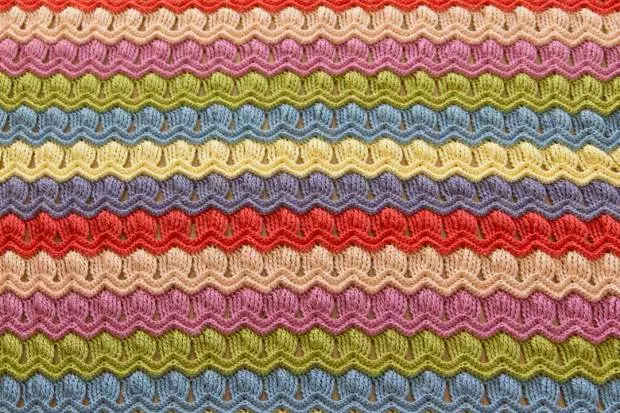
In the third row, two lifting loops are knitted, and then the columns that will be attached to the tops of the previous row columns, and in the connecting air loops. You should start with two columns with one base, which are attached to the first air loop of the previous row and to the top of the column to the left of it. In the following five loops of the row - on the column. Then the rapport begins. The next loop knit five columns with one base. Following five columns in each loop. Then five loops knit five columns with one vertex. Five rapport five columns in each loop. The row ends with a beam of three columns with one base for which the second right of the four air loops should be used.
When knitting from thin threads should be remembered that this pattern is obtained openwork (second and all subsequent even rows). Zigzags are formed from two rows, so when creating a multicolor pattern for alternation of lines, two rows are needed in one color. Changing the color in each row will create an interesting effect of the gradient.
Video on the topic
To study the zigzag knitting scheme, you can explore the following video lessons:
